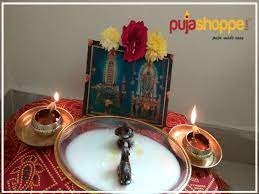
Mahashivratri: Understanding the Spiritual Significance and Celebrations of the Great Night of Shiva
Amidst the celestial dances of stars and the rhythmic flows of nature, there exists a night of unparalleled spiritual significance in Hinduism – Mahashivratri. This auspicious occasion is dedicated to Lord Shiva, the embodiment of divine consciousness and cosmic energies. As the world comes together to celebrate the Great Night of Shiva, this blog takes you on a journey to uncover the deep spiritual meaning behind Mahashivratri and the vibrant celebrations that accompany it.
The Night of Spiritual Awakening

Mahashivratri, literally translating to "the great night of Shiva," falls on the 14th night of the dark fortnight in the Hindu month of Phalguna (February-March). It is believed that on this night, the cosmic energies are particularly conducive for spiritual practices and inner transformation. Devotees engage in various rituals and practices to connect with the divine, seeking blessings and enlightenment.
Lingam Puja: Symbolism and Devotion

Central to Mahashivratri celebrations is the worship of the Shiva Lingam – a sacred representation of Lord Shiva's divine energy. The lingam symbolizes the union of the masculine and feminine energies, representing the creative force of the universe. Devotees offer water, milk, honey, and bilva leaves to the lingam, signifying purification and devotion. This act of worship is a reminder of the unity of all existence and the need to harmonize our energies for spiritual growth.
Fasting: Detoxifying the Body and Mind
Fasting is a common practice during Mahashivratri. It is not just a physical abstinence from food but a conscious effort to purify the body and mind. By refraining from indulgences, devotees aim to transcend the limitations of the physical realm and cultivate a sense of inner stillness. Fasting is a way to detach from the material world temporarily and focus on one's spiritual journey.
Japa and Meditation: Connecting with the Divine

Mahashivratri encourages devotees to engage in japa (repetition of sacred mantras) and meditation. Chanting the powerful mantra "Om Namah Shivaya" helps align the mind with the cosmic vibrations, while meditation allows individuals to delve deep within and experience the essence of their own consciousness. It is believed that on this night, the veil between the material and spiritual worlds is thinner, making it an opportune time for inner exploration.
Night-long Vigils and Celebrations
Throughout Mahashivratri, temples and ashrams come alive with devotional fervor. Many communities organize night-long vigils where devotees sing bhajans (devotional songs), read scriptures, and share spiritual stories. These celebrations create an atmosphere charged with positive energy, fostering a sense of unity and devotion among participants.
Conclusion
Mahashivratri is not merely a festival; it is an invitation to dive deep into the ocean of spirituality and self-discovery. It's a reminder that the Great Night of Shiva represents an opportunity for individuals to transcend their limitations, purify their energies, and experience a profound connection with the divine. As the world comes together to celebrate this sacred occasion, we are reminded that within the darkness of the night lies the potential for spiritual illumination, and within the core of our being lies the eternal flame of consciousness – waiting to be awakened on the Great Night of Shiva.
author - Nishita Khanna

